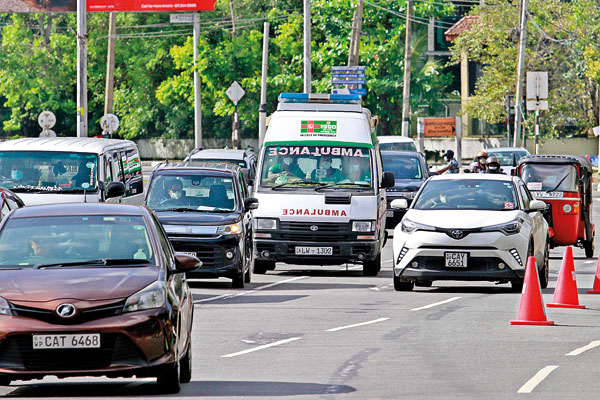News
1990 Emergency Suwaseriya says motorists deaf to their wailing sirens
View(s):
Suwaseriya has now started a campaign based on the message: “Menna Handa--Denna Ida” (Here's the sound, give way).
The 1990 Suwaseriya ambulance service is facing challenges in meeting the stipulated crucial timing when attending to emergency situations as vehicles do not give way on roadways, the service said in a statement this week.
“Everyone is aware of the challenges faced by ambulances and other emergency vehicles when trying to get through traffic in Sri Lanka,” the service said. “Most people may not be aware that there is a medically stipulated window of time known as the ‘Platinum 10’, where emergency on-site resuscitation should be performed in less than 10 minutes.”
There is also the more widely known concept of the ‘Golden Hour’, a term often used in trauma or emergency care to suggest that an injured or sick person must receive definitive treatment within the first 60 minutes from the time of injury or appearance of symptoms. It is believed that, once this time has lapsed, the risk of death or long-term complications will significantly increase. “Achieving these deliverables is impossible due to the lack of driving ethics and common decency displayed when motorists hear the siren of an ambulance,” it said. “Motorists try to either ignore, block, or overtake the ambulance forgetting that it is rushing to save a life. Motorists need to be mindful that nothing can trump that urgency.”
Suwaseriya has now started a campaign based on the message: “Menna Handa–Denna Ida” (Here’s the sound, give way). It is aimed at creating a sense of social responsibility by educating motorists to always move one’s vehicle to the left (or right depending on the situation) and to create road space for the ambulance, whose emergency lights and horn is active.
“Many motorists may not be aware that an ambulance can always go through a red light at a traffic-light, and feel that there is no point in trying to clear a path to allow the ambulance reach a red light as it would have to stop there,” the statement said. “But the only place the ambulance will want to stop at would be at its destination – the hospital.”
In recent times, many accidents have occurred where ambulances carrying patients have had to be rescued and lives saved, due to irresponsible and selfish motorists. Better road discipline, an ethical and considerate mindset and putting the urgency to save a life before your own priorities, will ensure that all ambulances will have quicker and safer journeys.
This will result in speedier patient transfers, increasing the chances of lives being saved.

